
Queering the Institution of Marriage in Iranian Wedding Ceremonies: An On-Screen Analysis

Figure 1: A still from the TV series Shahrzād, directed by Hasan Fathī, 2015.
Introduction
Marriage in Iran as both a legal and cultural institution has changed significantly in recent decades due to factors such as a rise in the average age at which people marry, a decline in the popularity of formal marriages, and a growing prevalence of alternative relational forms such as temporary marriage and cohabitation.1Janet Afary and Jesilyn Faust, Iranian Romance in the Digital Age: From Arranged Marriage to White Marriage (London: Bloomsbury Publishing Plc, 2021), 1. However, according to historian Janet Afary, the structure of the institution of marriage remains heteronormative and patriarchal in Iranian society.2Janet Afary, Sexual Politics in Modern Iran (Cambridge: Cambridge University Press, 2009), 360. This paper explores the wedding ceremony as a reflection of the institution of marriage, focusing on how it reinforces persistent gender norms through symbolic roles and expectations assigned to the participants – such as the clergyman as mediator, young unmarried women assisting the bride’s transition into wifehood, the excluded divorced/widowed women, the bride’s symbolic absence under the pretense of “ picking flowers” or “bringing rose water,” and the role of female elders in surveilling the bride’s virginity on the wedding night.
I highlight how marriage as a patriarchal institution exerts control over women’s bodies, particularly through the embodied practices of wedding ceremonies. Ultimately, I aim to explore possibilities for queering, resisting, and reimagining those gender norms that this analysis identifies. To do so I use cinema as the central analytic lens, focusing on the representation of marriage rituals in Iranian film and television, where visual and narrative strategies reproduce or resist normative structures of this institution. How do Iranian films portray the wedding ceremony as a space of control over women’s bodies and gendered expectations? What visual, symbolic, and/or performative elements reinforce or disrupt these norms? And in what ways can cinematic representations be mobilized to queer the institution of marriage? To answer these questions, I analyze the film The Mare (1986) by ‛Alī Rizā Zhikān and the TV Series Shahrzād (2015) by Hasan Fathī. For cinematic examples that deviate from the heteronormative structure, I analyze the films Santūrī (2007) by Dāryūsh Mihrjūyī and Zīr-i Saqf-i Dūdī (2017) by Pūrān Dirakhshandah. I argue that wedding scenes in Iranian visual media function not merely as cultural reflections but as active sites of negotiation—where heteronormative values are both reinforced and challenged. Despite the constraints of censorship and other limitations imposed on Iranian cinema, these scenes still hold the potential for queering marriage through critical analysis and imaginative reorientation.
Literature review: Marriage, Gender Norms, and the Potential for Resistance
Marriage is often referred to as an “institution” to emphasize its role as a “natural,” time-honored, and stable component of society.3Heather Brook, “Re-orientation: Marriage, Heteronormativity and Heterodox Paths,” Feminist Theory 19, no. 3 (2018): 47. However, both historical and contemporary critiques, particularly within Western feminist and queer theory – challenge this perception by exposing how marriage functions to uphold heteronormativity and patriarchal power structures. In Western contexts scholars have analyzed how legal frameworks, cultural norms, and performative rituals reinforce binary gender roles and regulate sexuality.4Heather Brook, “Re-orientation: Marriage, Heteronormativity and Heterodox Paths,” Feminist Theory 19, no. 3 (2018): 345-67. Meanwhile, in the Iranian context, marriage operates within distinct religious, legal, and cultural frameworks that similarly discipline women’s bodies and identities, though often through localized symbols, rituals, and state-sanctioned practices.
In “Reorientation: Marriage, Heteronormativity and Heterodox Paths,” Heather Brook, drawing on Sara Ahmed’s theory of queer phenomenology, outlines how heterosexual marriage is institutionally privileged. This framing constructs normative social orientations while marginalizing deviations. Concepts like “desire paths” offer alternative ways of imagining social movement beyond these fixed lines. Brook emphasizes that social change can emerge through repeated everyday acts of deviation from normative structures.5Heather Brook, “Re-orientation: Marriage, Heteronormativity and Heterodox Paths,” Feminist Theory 19, no. 3 (2018): 350-57.
And in “The Wedding as a Reproductive Ritual,” Rebecca Burch examines how cultural practices surrounding marriage are deeply rooted in fertility symbolism, including acts like placement of the wedding ring as a symbolic sex act, or the phallic undertones of the Japanese cake-cutting ritual.6Rebecca L. Burch, “The Wedding as a Reproductive Ritual,” Review of General Psychology 23, no. 3 (2019): 383. These symbols underscore the societal endorsement of heterosexual reproduction within marriage. Burch also highlights values traditionally associated with the female bride, such as seclusion and purification, reluctance, and virginity, arguing that such rituals function to regulate female sexuality, reinforce patriarchal structures, and uphold family honor.7Rebecca L. Burch, “The Wedding as a Reproductive Ritual,” Review of General Psychology 23, no. 3 (2019): 389-90.
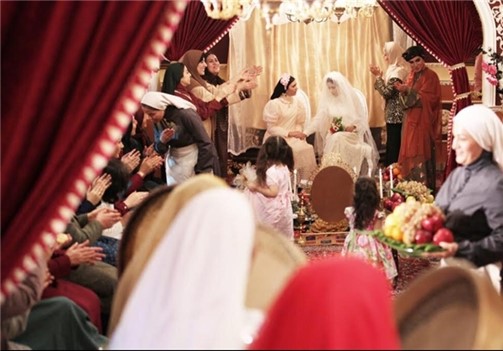
Figure 2: A still from the TV series Shahrzād, directed by Hasan Fathī, 2015.
Similarly, Iranian scholars have identified patterns of marriage as a regulatory institution and have explored the transformations it has undergone. In Women with Mustaches and Men without Beards: Gender and Sexual Anxieties of Iranian Modernity, Afsaneh Najmabadi explores how notions of romantic love and sexual fluidity during the Qājār era (1785-1925) changed under colonial influence, what she calls “another gaze”—the judgmental perspective of Europeans which pathologized homoeroticism and same-sex practices, framing them as signs of Iran’s “backwardness.”8Afsaneh Najmabadi, Women with Mustaches and Men without Beards: Gender and Sexual Anxieties of Iranian Modernity (Berkeley: University of California Press, 2005), 38. In response, a heteronormative restructuring of family life and public space took place, leading to the “heterosocialization” of Iranian society.9Afsaneh Najmabadi, Women with Mustaches and Men without Beards: Gender and Sexual Anxieties of Iranian Modernity (Berkeley: University of California Press, 2005), 3.
In Sexual Politics in Modern Iran, Afary traces the transformation of marriage in Iran from the early 19th century to the present. During that earlier period, marriage was considered nearly universal: once a girl reached a certain age, she was expected to marry, regardless of her family’s wealth or social class. These marriages were typically arranged by families and closely tied to female virginity. Marriage functioned primarily as a transaction in which women were often treated as commodities, subject to financial negotiations over mahriyah (dowry) and shīrbahā (milk price), typically arranged by fathers and male guardians.10Janet Afary, Sexual Politics in Modern Iran (Cambridge: Cambridge University Press, 2009), 21-28. However, within this patriarchal framework, women found subtle ways to assert agency.11Janet Afary, Sexual Politics in Modern Iran (Cambridge: Cambridge University Press, 2009), 19. For instance, although families traditionally chose husbands, women—whether married or widowed—could discreetly signal their availability to men in public through socially coded behavior.12Janet Afary, Sexual Politics in Modern Iran (Cambridge: Cambridge University Press, 2009), 47. In Iranian Romance in Digital Age: From Arranged Marriage to White Marriage, Afary and Faust argue that in contemporary Iran, despite the privileges granted to married couples by the Islamic regime, the structure of family appears to be fracturing. The rate of marriage has declined significantly, and women have gained greater autonomy in deciding whether to marry and at what age to enter the institution of marriage.13Janet Afary and Jesilyn Faust, Iranian Romance in the Digital Age: From Arranged Marriage to White Marriage (London: Bloomsbury Publishing Plc, 2021), 11.
Even as Iranian women gain greater autonomy through education and professional achievement, marriage continues to function as a central marker of their social identity. In “Modernity and Early Marriage in Iran: A View from Within,” Soraya Tremayne emphasizes that, regardless of women’s achievements in education or professional life, societal pressure to marry persists.14Soraya Tremayne, “Modernity and Early Marriage in Iran: A View from Within,” Journal of Middle East Women’s Studies 2, no. 1 (2006): 65. She argues that marriage, motherhood, and identity are closely intertwined, and that unmarried women are often perceived as failures.15Soraya Tremayne, “Modernity and Early Marriage in Iran: A View from Within,” Journal of Middle East Women’s Studies 2, no. 1 (2006): 84. Similarly, although Passionate Uprisings: Iran’s Sexual Revolution by Pardis Mahdavi was published in 2009, its ethnographic insights remain relevant for understanding the cultural weight of marriage. Drawing from her fieldwork in Tehran, Mahdavi portrays marriage as both a social goal and a perceived necessity for attaining status and personal freedom.16Pardis Mahdavi, Passionate Uprisings: Iran’s Sexual Revolution (Stanford: Stanford University Press, 2009), 155. She notes that traditional views on marriage and family remain deeply rooted, even as premarital relationships and discussions around virginity become more open.17Pardis Mahdavi, Passionate Uprisings: Iran’s Sexual Revolution (Stanford: Stanford University Press, 2009), 156, 275.
In Temporary Marriage in Iran: Gender and Body Politics in Modern Iranian Literature and Film, Claudia Yaghoobi also underscores the social status that marriage confers on women—a status often negotiated by fathers or male guardians prior to marriage.18Claudia Yaghoobi, Temporary Marriage in Iran: Gender and Body Politics in Modern Iranian Literature and Film (Cambridge: Cambridge University Press, 2020), 1. These scholars depict marriage in Iran as an evolving yet persistently gendered institution—one that continues to reinforce heteronormative expectations and regulate women’s roles within society. Within this heteronormative structure, there are ways to navigate, negotiate, and even subvert the institution of marriage. Yaghoobi introduces women who enter temporary marriage (sīghah) as individuals who do not necessarily conform to disciplinary expectations of society. These women are capable of disrupting dominant discourses and creating alternative and nonpatriarchal forms of female embodiment. Through literary analysis Yaghoobi argues that resistance is always possible because identity formation is the result of “acts of repetition, bodily gestures, and movements that create an illusion of a gendered self, which is in fact fluid and ever-changing.” While the female body is often regulated by overarching power structures, it simultaneously possesses agency. According to Yaghoobi women in temporary marriages occupy an invisible and liminal space, yet they remain significant within the dominant social imaginary by exercising power and agency.19Claudia Yaghoobi, Temporary Marriage in Iran: Gender and Body Politics in Modern Iranian Literature and Film (Cambridge: Cambridge University Press, 2020), 18.
I also use the works of Ahmed and Butler to explore how the heteronormative structure of Iranian marriage can be subverted by analyzing wedding ceremonies and their symbolic representations through the lenses of queer phenomenology and performative acts. These theoretical frameworks offer pathways for imagining alternative possibilities for queering the institution. In Queer Phenomenology: Orientations, Objects, Others, Ahmed examines how the body’s orientation toward certain objects or social structures—such as marriage—shapes one’s sense of self and belonging.20Sara Ahmed, Queer Phenomenology: Orientations, Objects, Others (Durham, NC: Duke University Press, 2006), 14. She argues that these orientations are not neutral, but are shaped by surrounding cultural and social norms, which direct the body along specific lines – often reinforcing heterosexual values.21Sara Ahmed, Queer Phenomenology: Orientations, Objects, Others (Durham, NC: Duke University Press, 2006), 58. Deviation from these normative paths is thus marked as abnormal or disordered.22Sara Ahmed, Queer Phenomenology: Orientations, Objects, Others (Durham, NC: Duke University Press, 2006), 79. Judith Butler’s theory of performativity, as articulated in “Performative Acts and Gender Constitution: An Essay in Phenomenology and Feminist Theory,” offers a framework for understanding gender identities as constituted through repeated actions. Butler contends that gender is not a fixed identity but rather a performance enacted through the repetition of specific bodily acts and behaviors.23Judith Butler, “Performative Acts and Gender Constitution: An Essay in Phenomenology and Feminist Theory,” Theatre Journal 40, no. 4 (December 1988): 519. She examines in how gender is constructed through these acts, and considers the possibilities for its transformation through subversive performance.24Judith Butler, “Performative Acts and Gender Constitution: An Essay in Phenomenology and Feminist Theory,” Theatre Journal 40, no. 4 (December 1988): 521. By employing these two theoretical approaches, I examine Iranian wedding ceremonies as sites where bodies are oriented along heteronormative lines and where gender is constituted through ritualized, repetitive acts. At the same time, these ceremonies also hold the potential for disruption – through alternative orientations and performances that challenge and reimagine the dominant structures.
Transactional Marriage and Maternal Disempowerment in The Mare (1986): Gender Roles and Family Survival in Iranian Society
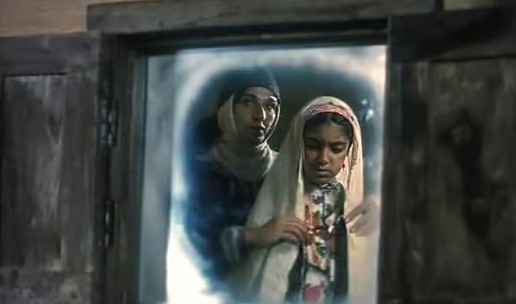
Figure 3: A still from The Mare (Mādiyān), directed by ‛Alī Rizā Zhikān, 1986.
‛Ali Zhikān’s The Mare follows Rizvānah (Sūsan Taslīmī) as she travels with her brother Rahmat (Husayn Mahjūb) to visit her daughter Gulbutah (Mojilong Danespooy), who has just given birth. Along the way Rizvānah reflects on her past hardships, including the destruction of their crops and raising four children alone. At that time Rahmat arranged a match between Gulbutah and Qudrat (Fīrūz Bihjat-Muhammadī), an older man with an infertile wife. Though Gulbutah resisted, the family accepted the proposal in exchange for a mare as shīrbahā (bride price). The journey ends with Rizvānah finding Gulbutah content beside her husband.

Figure 4: A still from The Mare (Mādiyān), directed by ‛Alī Rizā Zhikān, 1986.
This film portrays several symbolic layers relevant to this study, particularly through a gendered ‛aqd scene that foregrounds the performative dimensions of the Iranian marriage ceremony. Gulbutah, the young daughter of a struggling fatherless family, is effectively traded in a transactional marriage arrangement rooted in poverty and maternal disempowerment. Her marriage is framed not as a personal choice, but as a necessity for family survival. In one sequence a child asks whether Gulbutah is truly leaving to marry. Rizvānah replies, “Every girl finally leaves her house.” “To where?” asks the child. “To their man’s house—like me, who left my family’s house for your dad’s.” This dialogue reveals that marriage is a prescribed destiny for girls—a passage from one patriarchal household to another. In deeper layers of Rizvānah’s role, although we can sense her disappointment with this destiny, she has no choice but to force Gulbutah to enter this institution for the sake of the family’s survival.
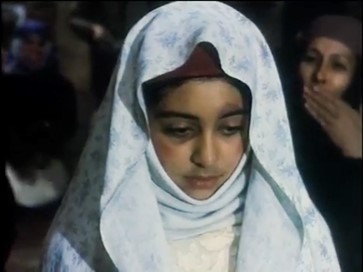
Figure 5: A still from The Mare (Mādiyān), directed by ‛Alī Rizā Zhikān, 1986.
Parallel to Gulbutah’s story, we encounter Qudrat’s first wife, rendered voiceless by her infertility, a condition that undermines her position within the family. During the marriage proposal scene, Rizvānah assures the groom’s family of her daughter’s fertility, claiming she will bear many healthy children. This moment underscores the naturalized link between successful marriage and reproductive capability, presenting fertility as an essential criterion for a worthy bride. The proposal scene not only underscores fertility as a requirement for a worthy bride but also normalizes lifelong unions as the marital ideal. After the conditions are accepted, Qudrat’s father offers a conventional blessing, wishing the couple a long life together “until they grow old.” Although divorce is legally permissible, the repetition of such blessings across many generations contributes to the perception that marriage should be permanent, an expectation deeply embedded in cultural discourse. Yet this seemingly unanimous endorsement of marriage is unsettled by Gulbutah’s quiet resistance. Despite the agreement among Rizvānah, Rahmat, and Qudrat, Gulbutah voices her reluctance. Rizvānah, imagining the improved future promised by the mare, tries to reassure her daughter: “Gulbutah dear… The seed must be sown. The ripe rice must be harvested. And a girl of age must be married. A man has come to take you. The husband’s house is the house of power.”25The Mare (Mādiyān), dir., ‛Alī Rizā Zhikān (Fārābī Cinema Foundation, Iran, 1986), 0:38:38- 0:38:54. When Gulbutah expresses fear, Rizvānah adds: “You are going to your man’s house, not the wolf’s house.”26The Mare (Mādiyān), dir., ‛Alī Rizā Zhikān (Fārābī Cinema Foundation, Iran, 1986), 0:39:00-0:39:04. These statements frame marriage as natural, inevitable, and tied to power and protection, reinforcing traditional gender roles and familial expectations.
The ‛aqd (marriage contract) ceremony further solidifies this transaction. Qudrat and other men are seated in a room. Rizvānah brings Gulbutah to the threshold, accompanied by her young siblings. Symbolic rituals unfold. Women make celebratory kil (ululation) sounds, burn isfand (wild rue) for protection, and scatter nuql (sugar-coated almonds)—all traditional signs of blessing and joy. As Gulbutah crosses into the room, she is seated before the men, while the accompanying women remain in the background—creating a visually gender-segregated space that emphasizes her passage into wifehood. The clergyman serves as the institutional voice of authority, interrupting the feminine rituals and finalizing the marriage with his formal blessing. Though his interaction with the couple is minimal, his presence signals the legal and religious legitimacy of the union. His blessing – “God willing, may you grow old together—and grow tired of each other too” – echoes the earlier ideal of permanence. Once his words are spoken, the women’s celebratory sounds resume, reinstating the gendered rhythm of the ritual.

Figure 6: A still from The Mare (Mādiyān), directed by ‛Alī Rizā Zhikān, 1986.
Patriarchy and Tradition in Shahrzād (2015): A Depiction of Coercion, Rituals, and Marriage in 1950s Iran
One of the most vivid depictions of an Iranian wedding ceremony is in Hasan Fathī’s Shahrzād, a historical television series set in 1950s Iran. The story centers on Shahrzād (Tarānah ‛Alīdūstī), a young medical student, who plans to marry her lover, Farhād (Mustafā Zamānī). Their plans are disrupted when Farhād is arrested for political activism. Although he is eventually released, Shahrzād is coerced into marrying Qubād— a man already married to the infertile daughter of a powerful patriarch, Buzurg Āqā—who orchestrates the union to secure a family heir. Despite her initial resistance, familial and patriarchal pressure compels Shahrzād to comply.
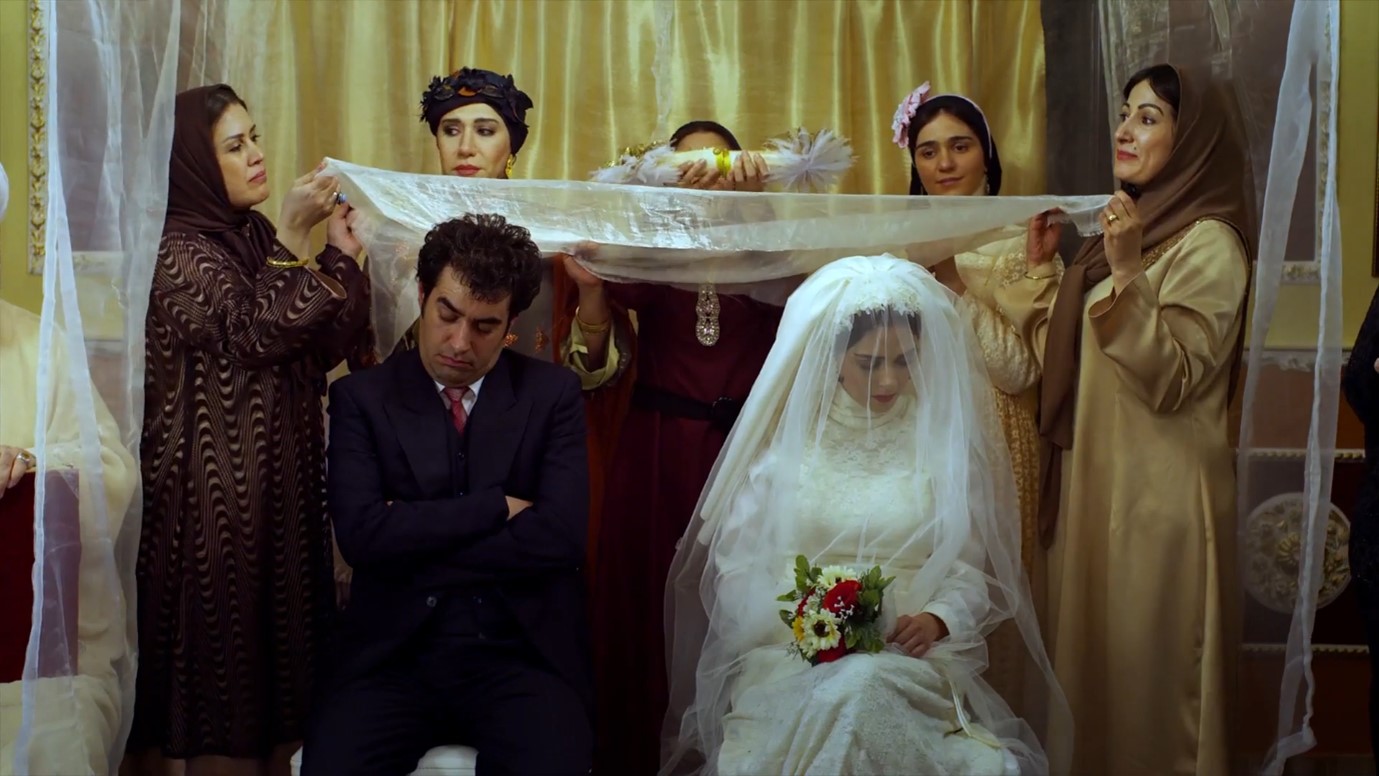
Figure 7: A still from the TV series Shahrzād, directed by Hasan Fathī, 2015.
The ‛aqd (marriage contract) scene between Shahrzād and Qubād unfolds in a room filled with women. Some make celebratory kil (ululation) sounds, others play the daf (a traditional frame drum), while the rest clap rhythmically. The spatial arrangement mirrors familiar Iranian wedding settings. A decorative cloth (sufrah-yi ‘aqd) is spread on the floor, with two chairs placed before it for the bride and groom. This sufrah is adorned with symbolic items meant to bestow blessings of prosperity, fertility, and sweetness upon the couple, such as a mirror and candlesticks, sangak bread, walnuts, eggs, and a Qur’an. The visual symmetry of the scene, emphasizing paired elements, reinforces the notion of the marital union. As the groom enters, the ambient sounds pause, and a woman announces his arrival. Shahrzād, seated and veiled in gauze, awaits the ceremony’s commencement. Her mother urges the others to bring in the clergyman quickly, emphasizing the cultural belief in the importance of auspicious timing. At this moment Shahrzād’s sister asks any widowed or divorced women to leave the room, reflecting a superstition that they may bring misfortune to the marriage. Once the clergyman arrives, four women begin the sugar cone grinding ritual. Two hold gauze above the couple’s heads, while the other two—typically unmarried women—grind decorated sugar cones over the fabric, symbolizing the wish for a sweet and blessed union. The clergyman recites the proposal three times. Because this is Shahrzād’s first marriage, she is referred to as Dūshīzah (maiden), emphasizing cultural norms surrounding virginity. He states: “… am I authorized by you, with the permission of your father and the elders present, to bind you in permanent and eternal marriage to Mr. …, with the agreed-upon dowry and conditions?”27Shahrzād, dir., Hasan Fathī (Sīmā Film, Iran, 2015), 0:13:33- 0:13:50. After the first recitation, one woman holding the gauze responds, “The bride has gone to pick flowers.” The second time, another says, “The bride has gone to bring rosewater.” On the third recitation, Shahrzād reluctantly responds: “With the permission of my father and the elders present, yes.” At that moment, the sugar-cone grinding stops, the gauze is removed, and the celebratory sounds resume. Simultaneously, Qubād lifts the veil from Shahrzād’s face, seeing her unveiled for the first time.
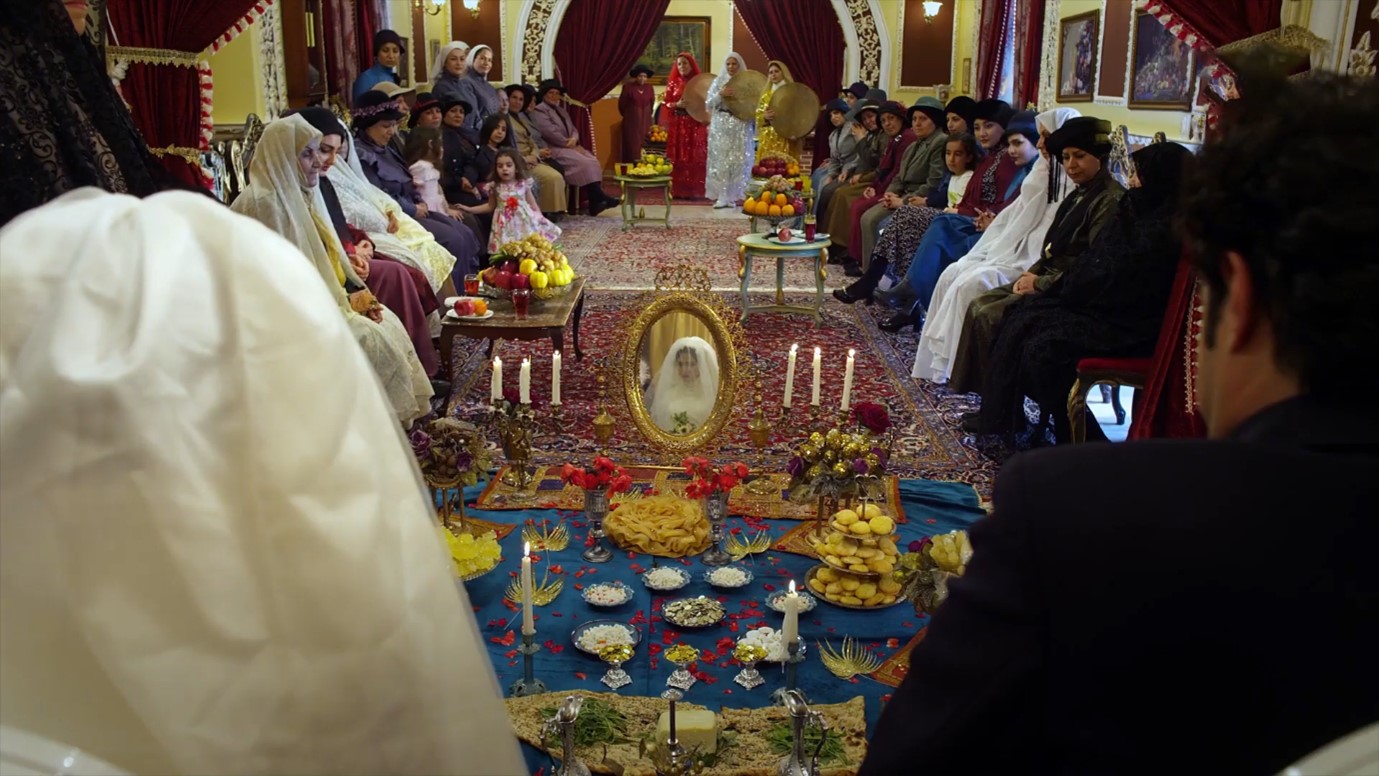
Figure 8: A still from the TV series Shahrzād, directed by Hasan Fathī, 2015.
Based on Butler’s theory, gender is not a fixed identity but a series of performative acts—rituals, gestures, and speech—that are repeated and reinforced over time. In this scene, Shahrzād’s hesitant “yes” is not just an individual choice but part of a larger script she is expected to follow. Her consent is structured by familial authority, the presence of elders, and religious norms, making her role as bride something she must perform to be recognized within the system. At the same time, Sara Ahmed’s notion of queer phenomenology helps us understand how the space and orientation of the ceremony work to “straighten” Shahrzād’s path—turning her away from a life with Farhād, her lover. The objects on the sufrah, the gendered tasks of the women, and the careful choreography of timing and speech all create a setting in which Shahrzād is pushed—bodily and emotionally—into a direction not of her choosing.
Reconfiguring Tradition: Marriage, Addiction, and Autonomy in Santūrī (2007)
The transformation of heteronormative marriage is symbolically portrayed in Dāryūsh Mihrjūyī’s Santūrī (2007), where traditional notions of marriage are reconfigured through the stages of proposal, the ‛aqd (marriage contract), marital life, and eventual separation. ‛Alī (Bahrām Rādān)—a talented yet troubled musician—and his wife, Hāniyah (Gulshīftah Farahānī), begin their marriage in love, but their relationship gradually unravels as ‛Alī succumbs to drug addiction. The film opens with flashbacks to ‛Alī and Hāniyah’s early relationship, narrated by ‛Alī, who reflects on how his addiction to alcohol not only derailed his music career but also led to the collapse of their marriage. Throughout the film, ‛Alī performs at celebratory events, including traditional Iranian weddings that adhere to customary spatial arrangements and gender roles. However, in the depiction of his own wedding, there is a symbolic slippage from the expected structure of the ritual, subtly undermining the traditional form.
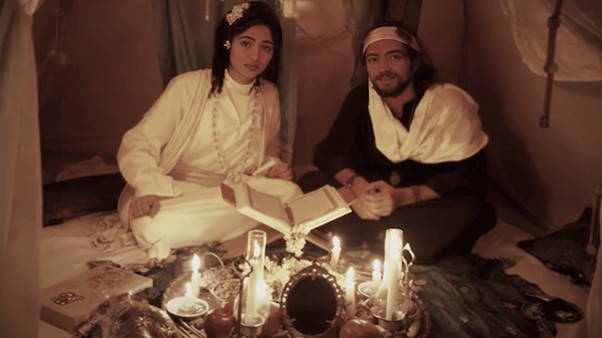
Figure 9: A still from the film Santūrī, directed by Dāryūsh Mihrjūyī, 2007.
Even the marriage proposal departs from tradition. Estranged from his family due to his professional pursuit of music, ‛Alī visits Hāniyah’s family home alone, without the customary accompaniment of relatives. The subsequent ‛aqd ceremony is similarly unconventional, taking place at ‛Alī’s home. A clergyman rings the doorbell and is greeted by one of ‛Alī’s friends, while the bride and groom sit together in a small tent on the balcony. Their sufrah-yi ‘aqd is reduced to a modest tray containing only a few symbolic items. Absent are the traditional audience, the sugar-grinding ritual, and the feminine mediators to typically facilitate the bride’s transition into wifehood.
During the ‛aqd ceremony, the clergyman, seated between ‛Alī and Hāniyah, asks, “Where are your parents?” They reply: “Bī kas u kārīm” – “We are alone and have no one to rely on.”28Santūrī, dir., Dāryūsh Mihrjūyī (Iran’s Institute for the Intellectual Development of Children and Young Adults, Iran, 2007), 0:45:40. When he asks Hāniyah if she consents to the marriage, she directly whispers that she wants a zīr lafzī—a traditional pre-acceptance gift. In conventional Iranian weddings, this exchange is highly stylized and indirect, often involving playful metaphors such as the bride being “out picking flowers” or “bringing rosewater.” Here, however, the dialogue is strikingly direct. When the clergyman poses the same question to ‛Alī, he, too, requests a zīr lafzī, and Hāniyah responds by giving him a small gift. After the clergyman departs, the couple celebrates by making music themselves – Hāniyah plays the daf and emits celebratory kil (ululation) sounds, actions typically performed by female guests or hired entertainers in traditional ceremonies.
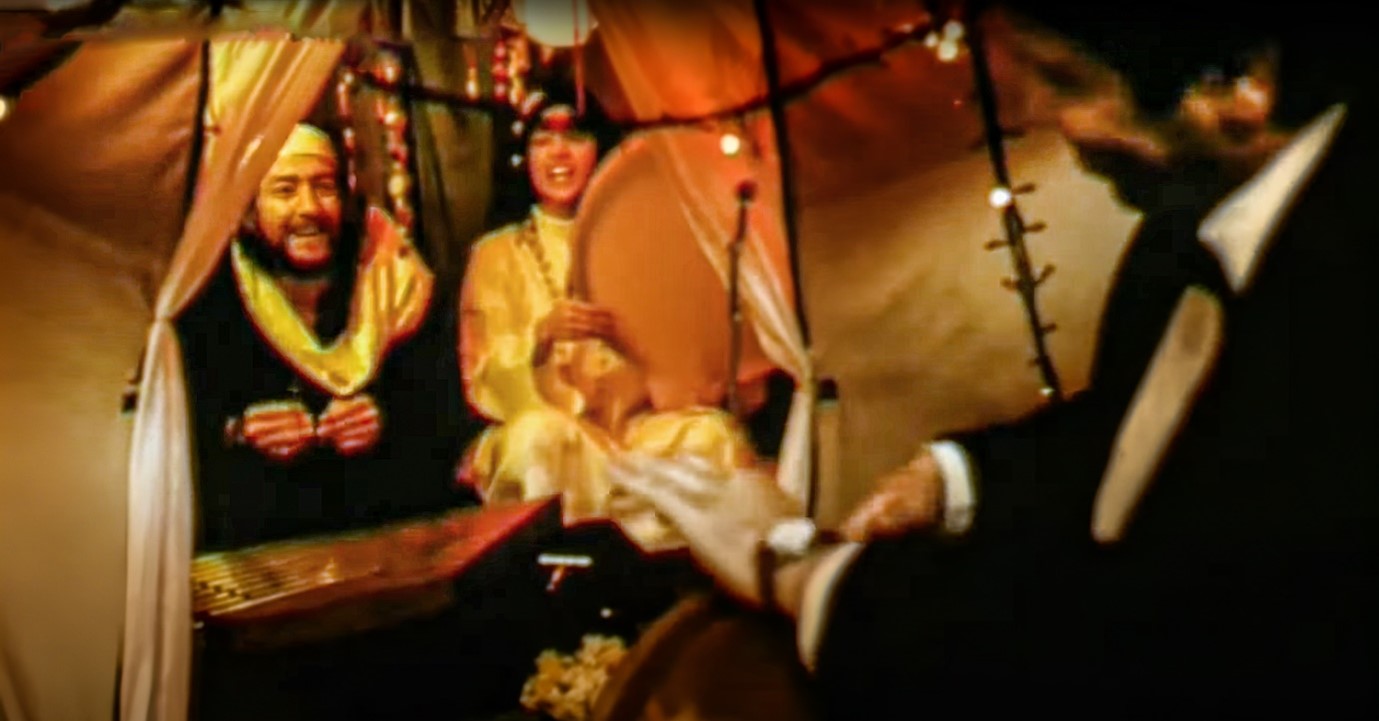
Figure 10: A still from the film Santūrī, directed by Dāryūsh Mihrjūyī, 2007.
This sequence challenges the expected performative structure of marriage, and characters disrupt the normative script through their refusal of the usual rituals, indirect speech, and familial presence. Hāniyah’s direct speech act subverts the hesitation expected of brides, marking a shift from passive to active agency within the ceremony. At the same time, the physical space and positioning of items, helps us read it as reorientation from desired paths.
Queering the Invisible Ceremony: Emotional Divorce, Temporary Marriage, and Female Agency in Zīr-i Saqf-i Dūdī (2017)
Unlike the earlier case studies, Zīr-i Saqf-i Dūdī (Under the Smoky Roof), directed by Pūrān Dirakhshandah, does not center around a traditional ‛aqd ceremony or the symbolic rituals typically associated with Iranian weddings. Instead, the film explores the aftermath of marriage—its erosion, its silences, and its potential for reconfiguration—through the lens of emotional estrangement and temporary unions. While the absence of the ceremonial space might initially suggest the film’s disconnection from the institution of marriage, its narrative reveals a powerful critique of heteronormativity by portraying marriage not as a celebratory beginning, but as a site of ambivalence, regulation, and, ultimately, deviation.
The film follows Shīrīn (Mirīlā Zāri‛ī), a middle-aged housewife estranged from both her husband Bahrām (Farhād Aslānī) and their son Ārmān (Abulfazl Mīrī). Her attempts to salvage the marriage through weight loss, hair dye, and pleas for emotional intimacy underscore the pressure placed on women to remain desirable and docile within the domestic sphere. Yet her gradual awakening and eventual decision to seek change reflect what Ahmed would describe as a shift in orientation: a refusal to continue along the prescribed “straight” path of heteronormative wifehood. The film closes with Shīrīn standing outside the idārah-yi āgāhī (literally, the “awareness office”), a metaphorical threshold that signals the possibility of reorientation, awareness, and departure from marital subjection.
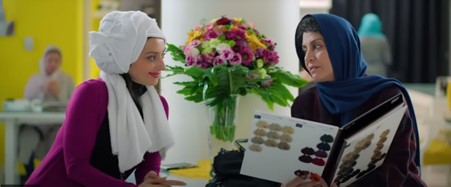
Figure 11: Shīrīn attempts to salvage the marriage through weight loss, hair dye. A still from the film Zīr-i Saqf-i Dūdī (Under the Smoky Roof), directed by Pūrān Dirakhshandah, 2017.
Parallel to Shīrīn’s story is Bahrām’s relationship with Ra‛nā (Bihnūsh Tabātabā’ī), a bank executive and his temporary (sīghah) wife. While sīghah relationships are often portrayed as secondary or marginal within Iranian cinematic and cultural narratives, Ra‛nā’s portrayal subverts this norm. She is not economically dependent nor socially invisible; rather, she is educated, financially stable, and assertive. Her desire to become pregnant, a role usually reserved for the permanent wife, queers the normative expectations surrounding sīghah, which conventionally discourages reproduction and long-term emotional involvement. In this way, Ra‛nā reclaims fertility not as a heteronormative imperative but as an act of bodily agency. Her refusal to remain reproductively and emotionally peripheral disrupts the temporality and function of sīghah, echoing Claudia Yaghoobi’s argument that women in temporary marriages can subvert patriarchal expectations through embodied resistance and self-determination.
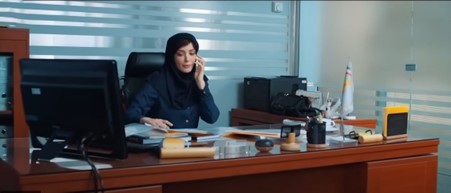
Figure 12: Ra‛nā subverting the sīghah wife image. A still from the film Zīr-i Saqf-i Dūdī (Under the Smoky Roof), directed by Pūrān Dirakhshandah, 2017.
Bahrām’s discomfort with Ra‛nā’s desire for a child further exposes the gendered double standards of Iranian marital structures. He accuses her of wanting a baby rather than love, revealing a tension between affect and function, emotion and reproduction, legitimacy and secrecy. Ra‛nā, however, refuses to perform the expected script of passive temporariness. Her character exemplifies what José Esteban Muñoz in Disidentifications: Queers of Color and the Performance of Politics terms disidentification:29José Esteban Muñoz, Disidentifications: Queers of Color and the Performance of Politics (Minneapolis: University of Minnesota Press, 1999), 4. she engages with the institution of marriage without aligning herself fully with its normative demands, carving out a queer positionality within the boundaries of legibility.

Figure 13: Ra‛nā reclaims fertility, showing Bahrām the result of her medical status. A still from the film Zīr-i Saqf-i Dūdī (Under the Smoky Roof), directed by Pūrān Dirakhshandah, 2017.
Zīr-i Saqf-i Dūdī extends the logic of queering marriage beyond the ceremonial moment, into the emotional and reproductive life of marriage itself. While earlier films such as The Mare and Shahrzād focused on how rituals structure normative femininity, and Santūrī offered a vision of ritual deviation and female agency, Dirakhshandah’s film complicates the institution from within. It queers the institution not through aesthetic rupture but through emotional, reproductive, and relational reconfiguration, making visible the quiet yet radical gestures of women who refuse to remain fixed within the boundaries of heteronormative marital roles.
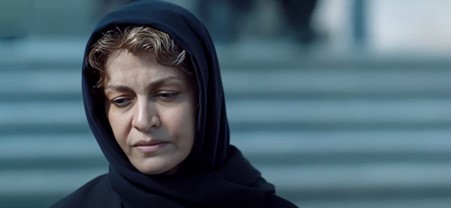
Figure 14: Shīrīn standing outside the idārah-yi āgāhī. A still from the film Zīr-i Saqf-i Dūdī (Under the Smoky Roof), directed by Pūrān Dirakhshandah, 2017.
Analysis: Reconfiguring Marriage in The Mare, Shahrzād, Santūrī, and Zīr-i Saqf-i Dūdī
Through an examination of The Mare (Mādiyān), Shahrzād, Santūrī, and Zīr-i Saqf-i Dūdī, I trace the invisible lines heteronormativity draws through spatial arrangements and symbolic acts, as well as identify the potential acts of deviation from the structure of the tradition of marriage. These films articulate how gender roles, particularly those assigned to women, are constructed and performed within the heteronormative framework of Iranian marriage ceremonies. Such weddings function as repetitive performative acts that establish a “normal” feminine life trajectory: virginity, marriage, and motherhood.
In The Mare, marriage emerges as an urgent necessity for the bride’s family—a transactional means of survival. Gulbutah, the bride, is positioned as an object within this economic exchange, reducing her agency and reinforcing the notion that marriage is the inevitable destiny for all girls. The success of this marriage, as emphasized through dialogues, hinges on the bride’s fertility. In contrast, Qudrat’s infertile first wife is voiceless and marginalized. This dynamic illustrates how the institution of marriage in Iran not only regulates female sexuality but also naturalizes reproduction and fertility as prerequisites for legitimate wifehood.
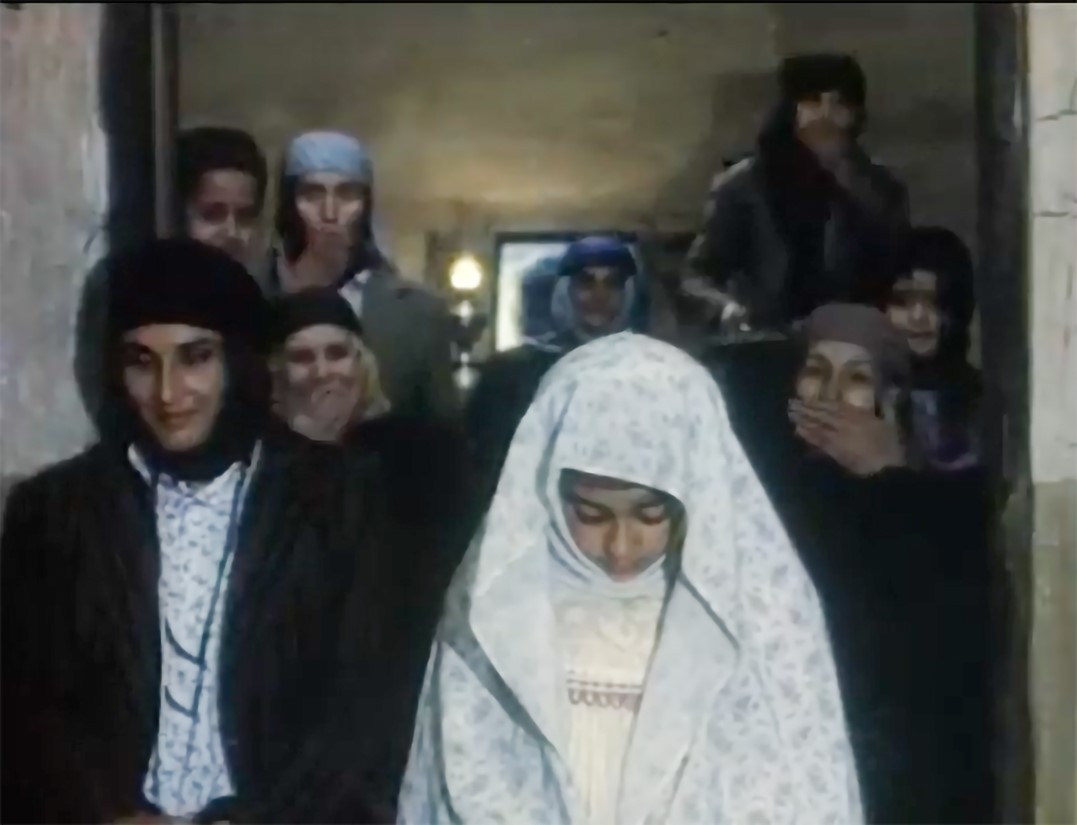
Figure 15: A still from The Mare (Mādiyān), directed by ‛Alī Rizā Zhikān, 1986.
Time also plays a crucial role in the structure of the marriage ceremony. As expressed in ritual verses such as those in The Mare, marriage is presumed to be lifelong, ending only in death. This temporality is both linear and gendered, positioning a girl’s life along a fixed path: from virginity to motherhood, and eventually, to death. This linearity is reinforced through gendered rituals—such as kil (ululation) sounds, sugar grinding, and symbolic acts— performed mostly by women, who accompany the bride through this transition. However, this ritualistic femininity is interrupted and formalized by male agents: the groom, who unveils the bride, and the clergyman, who legitimizes the union. Their interventions play critical roles in enacting and sanctioning the passage into womanhood.
In Shahrzād, heteronormativity is inscribed not only in language and ritual but also in spatial organization and symbolic design. The symmetry of the sufrah-yi ‛aqd and fertility-oriented items it bears – mirror, candlesticks, bread, walnuts, eggs, and Qur’an – visually affirm heterosexual union and reproductive potential. The veiled bride sitting silently, becomes the symbolic centerpiece of the ceremony, awaiting her unveiling by the groom. This act, which coincides with the removal of the sugar-grinding gauze, can be read as a metaphoric erasure of the hymen—marking the bride’s transformation from virgin to wife, and from girl to woman, through the legitimating agency of a man.
Another critical aspect depicted in both the Mare and Shahrzād is the emphasis on passivity and reluctance as feminine virtues. The bride is asked three times for consent and is expected to remain silent until the final repetition—a performance of shyness and hesitation that affirms modesty and appropriateness. An assertive or enthusiastic bride would disrupt the ritual’s logic; failing to perform the reluctance would deviate from the heteronormative path. While young and married women actively participate in these rituals, the exclusion of widowed or divorced women from the ceremony – explicitly shown in Shahrzād – further exposes another heteronormative expectation: the continuity and reproductive viability of marriage. As Ahmed explains, heteronormativity functions by orienting bodies and desires along prescribed paths; those who deviate are pushed aside or rendered invisible.30Sara Ahmed, Queer Phenomenology: Orientations, Objects, Others (Durham, NC: Duke University Press, 2006), 79. The exclusion of non-reproductive women thus aligns with Ahmed’s framework, illustrating how heteronormative structures discipline bodies through spatial and symbolic means. Both films demonstrated that marriage is not merely a private relationship, but a deeply social institution that disciplines women into culturally sanctioned forms of womanhood. Fertility, modesty, and lifelong devotion are not merely personal traits, but are performative roles that women are expected to embody within the heteronormative order.
In Santūrī, although the structure of the wedding ceremony is not entirely subverted, clear deviations from the conventional Iranian wedding ritual are evident. Unlike the brides in the other two visual references, Hāniyah chooses to marry her lover not out of necessity or for social acceptance, but out of love. Her autonomy remains visible even in separation. In the ‛aqd scene, there are no agents or mediators facilitating her transition into wifehood: instead, she plays the daf and produces the celebratory kil (ululation) sounds herself – acts typically performed by others on behalf of the bride. When asked by the clergyman whether she consents to the marriage, she responds directly and requests the zīr lafzī, disrupting the traditionally silent and passive image of the bride. Through the absence of mediatory roles—primarily fulfilled by women in conventional ceremonies—this bride reclaims a measure of female autonomy often lost within the ritual. In contrast to the spatial arrangements and symbolic elements depicted in Shahrzād, Santūrī introduces subtle yet significant departures. While the sufrah-yi ‘aqd remains, it is reduced to a small tray, diminishing both its scale and visual presence. The phallic-shaped sugar cones, typically used in the sugar-grinding ritual, are notably absent. Through these understated reconfigurations and omissions, the film subverts the heteronormative structure that underpins the earlier visual references.

Figure 16: A still from the TV series Shahrzād, directed by Hasan Fathī, 2015.
A compelling extension of this queering of the institution appears in Zīr-i Saqf-i Dūdī, which moves beyond the ceremony itself to explore the institution’s emotional aftermath. While it omits the visual spectacle of the ‛aqd, it offers a layered critique of heteronormative marriage through its depiction of emotional divorce, reproductive autonomy, and non-normative marital configurations. Shīrīn, the legal wife, experiences alienation and invisibility within her marriage—her body no longer oriented toward marital fulfillment but toward self-knowledge and independence. In contrast, Ra‛nā, the temporary wife, queers the boundaries of sīghah by seeking fertility on her own terms. Both women reorient themselves away from the submissive roles prescribed to them, embodying forms of agency that interrupt the reproductive, emotional, and gendered expectations of marriage.
Zīr-i Saqf-i Dūdī thus reveals that queering marriage does not require the ritualistic markers of the wedding ceremony. Instead, it highlights how everyday acts—emotional refusal and reproductive assertion—can serve as Ahmed’s “desire paths,” bending the institution toward alternative futures. This film adds a crucial layer to the archive: that queering marriage can occur not only through ritual subversion but also through the embodied practices that unfold in its wake. The analysis of The Mare and Shahrzād reveals that Iranian wedding ceremonies are far more than just joyful personal celebrations; they are deeply embedded with invisible heteronormative lines that, through bodily orientation and ritual repetition, shape normative ideas about gender, particularly for women. Within this institution, the female body is directed along a singular, linear trajectory from virginity to wifehood to motherhood.
While many ceremonial practices are carried out by women, the most pivotal moments — such as the groom unveiling the bride or the clergyman formalizing the marriage—are controlled by men. The bride is expected to remain passive, silent, and demure, waiting for events to unfold around her rather than exercising agency. Her role is defined by modesty, submission, not choice or power. The objects and actions that structure these weddings—such as the symmetrical arrangement of the sufrah-yi ‛aqd or the ritual of asking the bride for consent three times—construct and reinforce a normative image of femininity. Fertility, passivity, and coupledom are not presented as options but as the only acceptable marker of womanhood.
However, by examining these rituals closely, we can begin to question their authority and normative force. These practices, as scholars like Ahmed and Butler argue, derive their power from repetition– making them socially constructed rather than natural or immutable. This recognition opens the possibility of reimagining these ceremonies and the gender roles they enforce. Understanding that these rituals are not fixed allows us to envision alternative ways of being – ones that resist the prescriptive “straight” lines of heteronormativity and make room for queerer plural paths. A compelling example of such subversion appears in Santūrī, where the marriage ceremony—although still formalized by a clergyman—departs from traditional expectations. Through subtle reconfigurations and the erasure of specific feminine roles, the ‛aqd scene disrupts the “straight lines” of the ritual and challenges what has been normalized as the institution of marriage through repetition.
Conclusion:
Taken together, these three films and one TV series —The Mare (1986), Shahrzād (2015), Santūrī (2007), and Zīr-i Saqf-i Dūdī (2017) —illustrate how Iranian marriage ceremonies and institutions operate not only as cultural traditions but as historically situated sites where gender norms are performed, negotiated, and occasionally disrupted. The Mare, made during the early post-revolutionary era and amidst the Iran-Iraq War, reflects a socio-political landscape marked by economic hardship, patriarchal consolidation, and the sacralization of traditional family values. Marriage here is portrayed as a survival mechanism—an institution where women’s roles are strictly defined by fertility and sacrifice. Shahrzād, though set in the 1950s but produced in the 2010s under heightened censorship, offers a retroactive critique of patriarchal coercion and the idealization of marriage, embedding these themes within lush period aesthetics and nostalgic tropes. Its faithfulness to ritual aesthetics masks deeper anxieties about gender, agency, and political control—past and present. Santūrī, released in the late reformist era but suppressed by the state, marks a pivotal departure: it presents marriage not as destiny or duty, but as choice—and ultimately failure—due to addiction and social alienation. Here, traditional symbols are reduced or erased, and the bride takes active control of her role, challenging both ritual convention and normative femininity. Finally, Zīr-i Saqf-i Dūdī shifts the focus beyond the marriage ritual to examine its emotional and reproductive aftermath. Set in a contemporary urban setting, the film portrays how emotional detachment, temporary marriage, and reproductive desire can become tools of both regulation and resistance. Through its portrayal of women who reorient themselves away from submissive roles and reclaim agency—whether through refusing invisibility or asserting fertility on their own terms—the film queers the institution from within, showing that subversion can occur not only through ritual deviation but also through lived, embodied resistance. In each production heteronormativity is not only maintained through ritualistic repetition, but also questioned and reimagined in moments of cultural transition. Each production thus becomes a visual archive of its time, tracing how gendered bodies are shaped by—and can at times resist—the institutional demands of marriage.
Cite this article

This article explores the Iranian wedding ceremony as both a cultural ritual and a performative site for interrogating the heteronormative structure of marriage. While legal and social transformations in Iran have introduced new forms of partnership—such as temporary marriage and cohabitation—the institution of marriage remains deeply patriarchal and invested in regulating female bodies. Drawing on feminist and queer theoretical frameworks by Sara Ahmed and Judith Butler, the paper examines how symbolic and ritualistic elements within Iranian weddings reinforce normative gender expectations. Through close visual analysis of three films – Mādiyān (The Mare, 1986), Santūrī (2007), and Zīr-i Saqf-i Dūdī (Under the Smokey Roof, 2017) – and one TV series – Shahrzād (2015) – this study investigates how cinematic representations of weddings both reproduce and challenge dominant Iranian cultural ideologies. These works reveal the persistence of rituals that naturalize female passivity, fertility, and heterosexual coupling, while also exposing moments of resistance, reorientation, and queering within and beyond the ceremonial space. I argue that Iranian visual media function as critical archives where marriage can be reimagined not merely through ritual transgression but through deviations that subvert the straight lines of heteronormativity.



